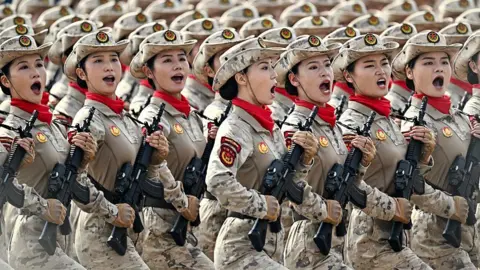China has unveiled a range of new weapons, drones, and other military hardware in a massive parade that many see as a clear message to the United States and its allies.
The event saw Xi Jinping host more than 20 foreign heads of state, including Russia's Vladimir Putin and North Korea's Kim Jong Un, both of whom rely on China for economic support and more.
It was a display of Xi's growing power on the world stage and of China's military prowess - the show included the Guam killer missile, the loyal wingman drone, and even robotic wolves.
Beyond the hype and shiny new weaponry, what did we learn?
Here are our five takeaways.
1. China has a lot of weapons. How well can it deploy them?
What was clear from Wednesday's display was that China has been able to quickly produce a diverse range of weapons.
Ten years ago, the military technology they put on show tended to be rudimentary copies of far more advanced equipment invented by the US, notes Michael Raska, assistant professor in the military transformations programme at the Nanyang Technological University of Singapore.
But this parade revealed a more innovative and diverse range of weapons, particularly drones and missiles - a reflection of how advanced their defense-industrial complex has become.
2. China is focusing on missiles to counter the US
China has rolled out plenty of missiles, including some new variants.
These include the Dongfeng-61, capable of carrying multiple warheads, and the Guam Killer Dongfeng-26D intermediate-range missile, which could target key US military bases.
3. China is going all the way with AI and drones
China is showcasing a wide range of drones, including the AJX-002 giant submarine drone which could do surveillance and reconnaissance missions.
4. China may have the technology, but the US still has an edge
The parade shows that China is catching up quickly with the US in military technology but still lacks the operational efficacy of the US military.
5. The parade was a weapons sales pitch – and a chance to show the US a united front
With leaders from various countries invited, the parade served as a giant sales pitch on Chinese arms to potential buyers, showcasing China's military innovations and forging international alliances.





















